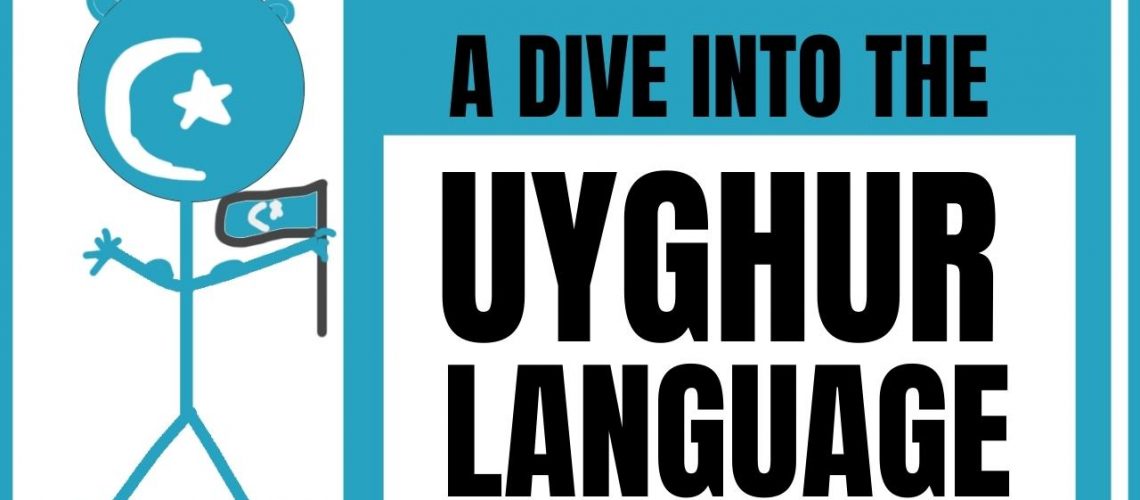What is the Uyghur Language?
Uyghur, or Uyghur tili, is a Turkick language formerly known as Eastern Turki spoken by around 10 to 15 million people, primarily in the Xinjiang Uyghur Autonomous Region in northwest China. Uyghur is predominantly written in a modified version of the Arabic script, however, speakers and writers may switch between a modified Cyrillic alphabet, and Latin alphabet (Hamut & Joniak-Luthi, n.d.).
Who Speaks Uyghur?
According to Harvard’s Department of East Asian Languages and Civilizations, Uyghur is primarily spoken in Xinjiang with about 10-11 million speakers. Outside of Xinjiang, approximately 1-1.5 million people speak Uyghur with a majority of those speakers living in Turkestan, Kazakhstan, Kyrgyzstan, Uzbekistan, and Pakistan. Small diaspora groups exist in Afghanistan, India, and Europe (Uyghur 2, n.d.).
Read Our Other Language Digest Blogs
History of Uyghur People
The word “Uyghur” can be used to describe the historical Uyghur people, who were a band of tribes in the East Turkic region; It can also be used to describe the now Turkic, predominantly Muslim, subdivision that inhabites the Xinjiang region.
The traditional Uyghur people lived in what some now call “Uyghur land” which geographically refers to the Tarim, Junghar, and Turpan bains in Central Asia. These bassins played a major role in connecting early Greco-Roman cultures with Buddhist culture in India, and Central Asian culture. Because of the convenient location, the old Uyghur land developed a strong cosmopolitan like presence which attracted many early explorers during their travels along the Silk Road. Travelers from the Sung dynasty in 981-984 noted their good impressions of temples and libraries, as well as the Uyghur kingdom’s social policy and early forms of wellfare (Kamberi, n.d.).
Uyghur history can be simplified into two eras: Khaganate, and Kingdom. The Khaganate lasted from 745-840 A.D. and encompassed just about the entirety of the Xiongnu empire. The Khaganate played an important role in providing assylum to many Sogdian, (ancient Iranian/Persian civilization) fleeing Islamic conquest. After the collapse of the Khagante, largely due to an invasion by the Yenisei Kyrgyz who were another group of Turkic dudes, two separate Uyghur kingdoms emerged: the Ganzhou Uyghur Kingdom, and the Kingdom of Qocho. The Ganzhou Uyghur Kingdom converted to Buddhism and Manichaeism. These Uyghurs would later become “Yellow Uyghurs”, and did not convert to Islam, and are not the Modern Uyghurs of today. The Qocho Kingdom on the other hand came under rule of the Mongols in the early 1200s, and provided them with a literary system as we have mentioned in a previous video discussing Mongolian.
Linguistic Development
The Uyghur language can be broken down into five different periods each of which carries its own controversy within the linguistic community but has enough evidence to be placed in this article. All periods are taken from Kamberi, D. (n.d.).
Pre-Historic Uyghur
Spoken prior to the 6th century B.C., this version of Uyghur is the oldest found through oral tradition and folk stories. No written form has been discovered.
Ancient Uyghur
Spoken between the 6th century A.D. and 10th century A.D., this version contains influence from other non-Altaic languages, without the influence of Islam.
Medieval Uyghur
Spoken between the 10th and 15th century A.D., this version reflects mostly Islamic literature and shows heavy influence from Arabic and Persian.
Early Modern Uyghur
Spoken between the 16th century – the 19th century.
Modern Uyghur
19th century – present.
Uyghur Phrases and Basic Vocabulary
| English | Uyghur (transliteration) |
| Welcome/Hello | Qarshi elish |
| Hello | Assalamu alaykum! (Arabic) |
| How are you? | Yaxshimusız |
| I’m fine, and you? | Män yaxshi, räxmät sızgä, sızchu? |
| Have a nice day! | Künıngız köngüllük bolsun! |
| T-shirt | Köynek |
| Medicines | Dora |
| Ten | On |
| Tenth | Oninchi |
| Eleven | On bir |
| Twenty | Yigirme |
| Pleased to meet you | Körüshkinımızgä xushalmän |
Resources to Learn Uyghur
- Uyghur: An Elementary Textbook (Gulnisa Nazarova)
- The Sacred Routes of Uyghur History
- Uyghur – Learn101.org
- Uyghur Phrases – Omniglot
References
- Hamut, B. H., & Joniak-Luthi, A. J. (n.d.). The Language Choices and Script Debates among the Uyghur in Xinjiang Uyghur Autonomous Region, China. http://Citeseerx.Ist.Psu.Edu/.
- Harvard University Dept. Of East Asian Languages and Civilization. (n.d.). Uyghur 2. EALC header. Retrieved April 25, 2022, from https://ealc.fas.harvard.edu/uyghur#:~:text=Uyghur%20is%20a%20Central%20Asian,Uyghuristan%2C%20or%20Chinese%20Turkistan)
- http://citeseerx.ist.psu.edu/viewdoc/download?doi=10.1.1.692.7380&rep=rep1&type=pdf
- Uyghur. Center for Languages of the Central Asian Region. (n.d.). Retrieved February 16, 2022, from https://celcar.indiana.edu/materials/language-portal/uyghur/index.html
- Kamberi, D. (n.d.). Uyghurs and Uyghur identity – radio free asia. Retrieved February 18, 2022, from https://www.rfa.org/english/bookshelf/UyghurIdentity.pdf
